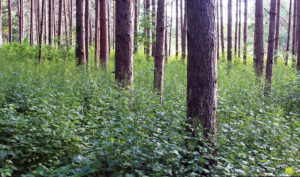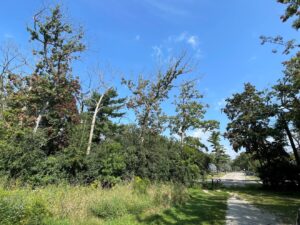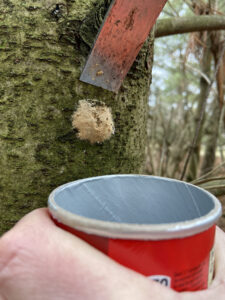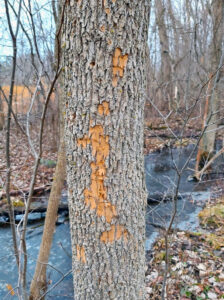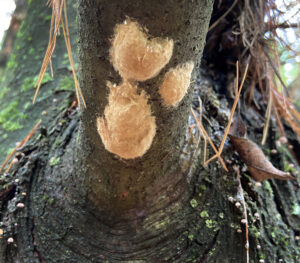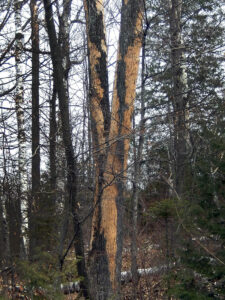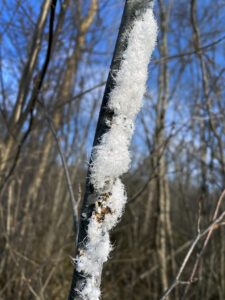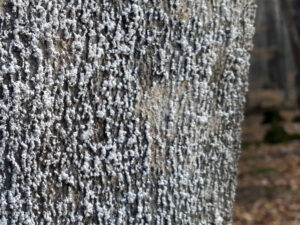
Lots of beech scale, covered in white wool, makes this tree’s bark look fluffy. / Photo Credit: Linda Williams, Wisconsin DNR
By Linda Williams, DNR Forest Health Specialist, Woodruff
Linda.Williams@wisconsin.gov or 920-360-0665
Last month, we introduced readers to the woolly alder aphid, which is easier to spot in the winter as the insects congregate on alder branches and grow strands of white, waxy material to cover themselves for winter.
But there are other white, fluffy things that you might notice on tree bark or branches as well.
Beech scale, the insect associated with beech bark disease, is covered in white wool and remains on the tree throughout the winter. In areas with high beech scale populations, the beech trees can be so white with insects that the bark looks white, like a birch.
Continue reading “What Are Those White Fluffies On Trees?” →

